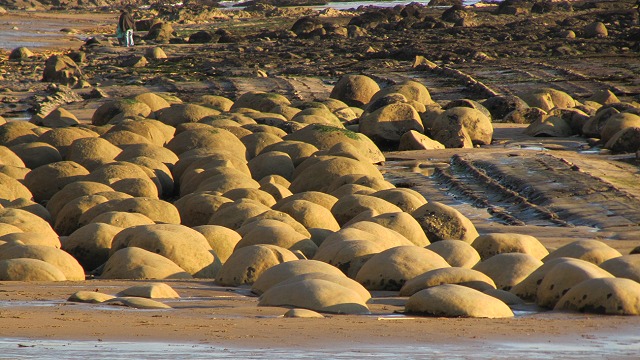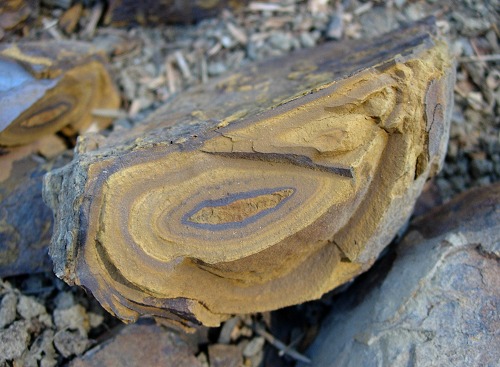My line of work brings various people to me, asking about a mineral object they have found. Often that object is a rounded shape of ordinary-looking sedimentary material, cemented into stone. "It's a very nice concretion," I inform them. A concretion is not as exciting as what they hoped it might be—a fossil egg is their fondest wish, followed by a meteorite—but concretions can be sources of wonder and even inspiration, if not money.
"What is this thing in the rock?" may be the oldest question in geology. It was, at least, the subject of geology's founding document, a short treatise published in 1669 by Nicolaus Steno on "solids naturally embedded in solids" better known by the first word of its long Latin title, "Prodromus." It took strenuous reasoning and airtight argument for Steno to establish today's common-sense knowledge that most "solids in solids" are either fossils, large sedimentary particles, or mineral crystals of some kind. (Steno's birthday was observed yesterday with a "Google doodle.")
Concretions aren't any one of those three possibilities, but a confusing mixture: hard and symmetrical like a crystal, granular like a sedimentary stone, round and organized-looking like a fossil. They look as if they actually grew inside solid rock. And so they did, sort of. They appear to have formed rather early in the process that turns buried sediment into rock, as mineral cement is deposited in layers growing outward from a central point—or perhaps resisting a cementation process advancing inward upon them instead. The grains of sediment were undisturbed; only the cementing mineral, usually calcite or iron oxides, moved in to fix them in place.
It can be hard to tell how a concretion might have formed. Some are stony lumps with a fossil or a mineral particle inside, where it's plausible that some chemical mechanism arising from the central object controlled things. Some have fractures inside, filled with crystals. Others, like this concretion I found in the hills of Oakland, have nothing in particular at their core, just pure clay or sand. Geologists find concretions only slightly less puzzling than the general public.


